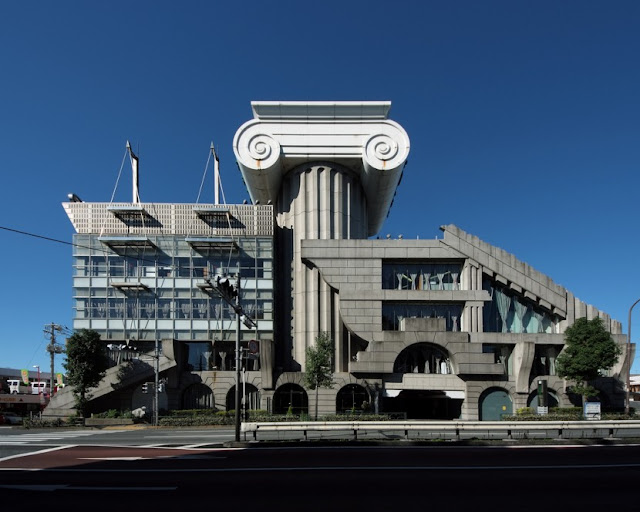Parody & Pastiche
Throughout Linda Hutcheon’s book ‘The Politics of
Postmodernism: Parody and History’, the author states that postmodernism has in fact arisen
from the conjunction of modernism and is directed, innovative and revolutionary
rather than a regurgitated art form. This can be referenced within the quote
‘Postmodernist
ironic recall of history is neither nostalgia nor aesthetic “cannibalization”
Nor can it be reduced to the gibly decorative. It is true, however, that it
does not offer what Jameson desires – “genuine historicity”’ ‘Hutcheon, L. (1989) The
Politics of Postmodernism: Parody and history, London & New York: Routledge’
She believes
that even though postmodernism cannot hold true historical authenticity, this
does not mean that the movement cannibalizes historical aesthetics. The author
concludes that postmodernism is a new and modified art form which gives its
aesthetics new life and meaning. This is a direct challenge towards the work of
Fredric Jameson in the book ‘Postmodernism: or the Cultural Logic of Late
Capitalism’ where the author references
‘Which randomly
and without principle but with gusto cannibalizes all the architectural styles
of the past and combines them in overstimulating ensembles.’ ‘Jameson,
F. (1991) Postmodernism: Or the Cultural Logic of Late Capitalism, United
States: Duke University Press’
His
philosophy dictates that post modernism holds no personal style and has a
distinct absence of originality. Throughout the writing this definition of
pastiche states that all postmodernist work is being regurgitated from past
styles and is now creating unoriginal art and culture. He believes that by
giving classical work new meaning you are removing its context in history and
postmodernism as a movement is the reabsorption of past methods which
decontextulises historical styles.
In
contrast, the designs below by ‘Stranger & Stranger’ use influences from
Victorian styles however, use modern methods to achieve innovative results.
Their utilisation of modern foiling and embossing methods have managed to
articulate precisely Linda Hutcheon’s ideologies of postmodernist design, the
idea that past styles can be revolutionary rather than a regurgitated art form.
The postmodern architecture below directly relates to the ideology of Fredric Jameson where he states that all postmodern design is an overstimulating combination of all past styles. The work below which fuses classicalism with modernist design is a reassurance of this statement however, all art movements have projects which have not been properly executed in their design and therefore result in unappealing aesthetics. As Linda Hutcheon explains,
‘Postmodernist art is precisely that which casts “the
contradictions of modernism in an explicitly political light.” In fact, as
architect Paolo Portoghesi reminds us, it has arisen from the very conjunction
of modernist and avant-garde politics and forms’‘Hutcheon, L. (1989) The Politics of Postmodernism: Parody and history, London & New York: Rutledge’
which expands on the concept that postmodernism is merely the late stages of modernism where artists look back at previous eras and styles to create truly innovative avant-garde design which cannot be produced with the continuation of the modernist ideology. The architecture below attempts to bring classical styles into a new era of slick modern design which is raw and true to its materials. Jameson proposes that this new contextualisation of past styles destroys their integrity and connection to their time period however in contrast, Hutcheon argues that they develop a new context of their own.



No comments:
Post a Comment